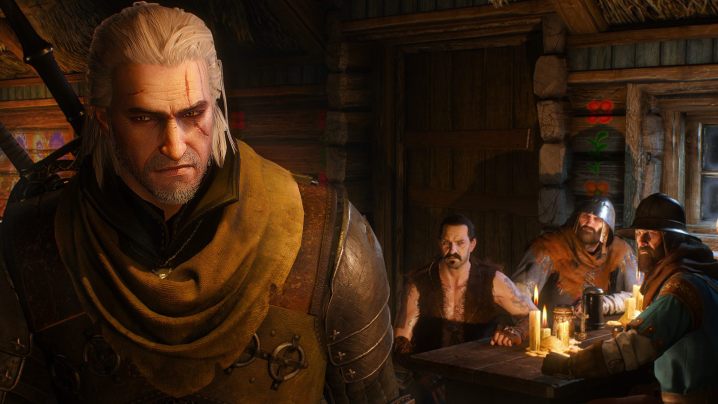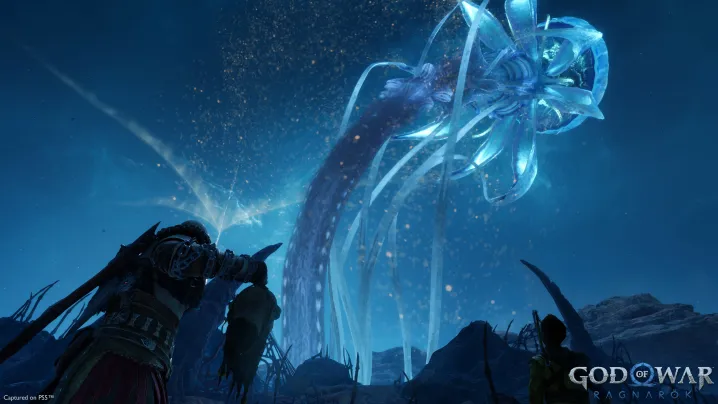God of War Ragnarok’s main story is memorable, but some of the smaller moments are what have stuck with me most since completing it. I’m not just talking about its moments of quiet, but its optional Favors as well. These sidequests can be entirely ignored, but skipping them is a mistake as they contain some of the game’s best scenes. It’s a trait that God of War Ragnarok shares with The Witcher 3: Wild Hunt, one of the best RPGs of the last decade.
In some large RPGs, sidequests can often boil down to boring fetch quests, or they simply may not have as much polish put into their writing. As a result, they can feel like content bloat that does more harm than good to the game’s pacing. The Witcher 3: Wild Hunt and God of War Ragnarok avoid this problem by elevating these sidequests, making the entire adventure feel more cohesive and ensuring that the small moments stick out as some of the best.
More than a side thing
Like God of War Ragnarok, The Witcher 3: Wild Hunt features a lengthy main story full of memorable characters, set pieces, and boss fights. While those alone would have made it a strong RPG, it’s remembered as an all-time great because of how rich its world is, something that’s reflected in its side content. There were quests like Ghosts of Past, which pays off the character arc of Witcher 2 character Letho, but it’s entirely possible to finish the game without ever seeing it.

Others, like Return to Crookback Bog, turn what could just be some fun supernatural fights into a chilling tale about abuse and broken families. While The Witcher 3: Wild Hunt’s main narrative is strong, these side moments are what make it a game that sticks with you years after release. I can already tell the same will be true of God of War Ragnarok, as some of my favorite missions in the game are entirely optional Favors.
An early game Favor called The Weight of Chains sees Kratos, Mimir, and Atreus freeing a giant Lyngbakr sea creature that Mimir imprisoned while working with Odin. They manage to break its chains, but find that it now struggles to move and do what it used to. This sidequest takes a series of somewhat standard combat encounters and puzzles and spins them into critical aspects of a memorable tale. The Weight of Chains reflects on how Kratos and Mimir’s reckless actions have had irreversible consequences, but they now have an opportunity to be better people in the future.
Another standout Favor called Secret of the Sands, where Kratos and Atreus free a trapped jellyfish-like creature called a Hafgufa, is also quite beautiful. The short story shows what Kratos will do to be able to spend more time with his son in the face of Ragnarok. However ordinary these sidequests may be from a gameplay standpoint, their narrative relevance and level of polish are on par with some of God of War Ragnarok’s main quests. This high effort even applies to some side missions that wholly exist with NPCs in the game’s overworld, ones that aren’t even built around huge set pieces. For example, there’s The Lost Treasure quest.

At its core, The Lost Treasure just tasks Kratos with opening two chests. It’s a simple task that’s still stuck in my mind a week after I’ve beaten the game because it tells a relevant, tragic tale about a father and son who failed to communicate. That attention to detail is what can make a game special, and it’s something that both God of War Ragnarok and The Witcher 3: Wild Hunt have in spades.
Of course, not every developer has the resources to create optional content delivered with this much depth. In those cases, less may be more, as I’ll commend a game that keeps what side content it does have interesting more than one that pads out the game completion runtime with meaningless grinds.
By lovingly crafting sidequest content on the same level as the main story, these RPG worlds feel livelier, and otherwise menial missions become enthralling moments. Games like The Witcher 3: Wild Hunt and God of War Ragnarok have set a standard for the rest of the genre to follow; hopefully, big 2023 RPGs like Forspoken, Final Fantasy XVI, and Starfield are taking notes.
God of War Ragnarok is now available on PS4 and PS5.



